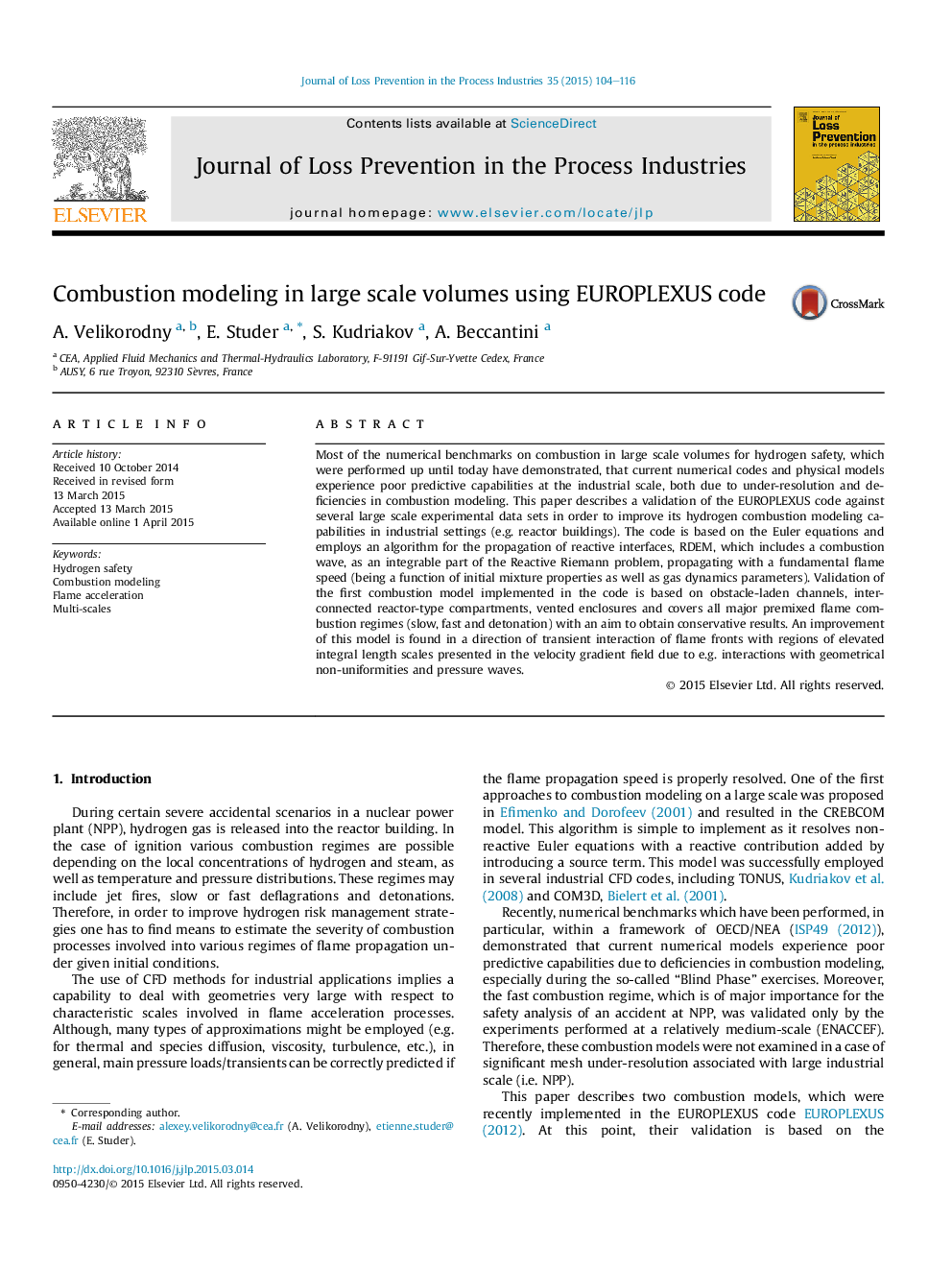| Article ID | Journal | Published Year | Pages | File Type |
|---|---|---|---|---|
| 6973435 | Journal of Loss Prevention in the Process Industries | 2015 | 13 Pages |
Abstract
Most of the numerical benchmarks on combustion in large scale volumes for hydrogen safety, which were performed up until today have demonstrated, that current numerical codes and physical models experience poor predictive capabilities at the industrial scale, both due to under-resolution and deficiencies in combustion modeling. This paper describes a validation of the EUROPLEXUS code against several large scale experimental data sets in order to improve its hydrogen combustion modeling capabilities in industrial settings (e.g. reactor buildings). The code is based on the Euler equations and employs an algorithm for the propagation of reactive interfaces, RDEM, which includes a combustion wave, as an integrable part of the Reactive Riemann problem, propagating with a fundamental flame speed (being a function of initial mixture properties as well as gas dynamics parameters). Validation of the first combustion model implemented in the code is based on obstacle-laden channels, interconnected reactor-type compartments, vented enclosures and covers all major premixed flame combustion regimes (slow, fast and detonation) with an aim to obtain conservative results. An improvement of this model is found in a direction of transient interaction of flame fronts with regions of elevated integral length scales presented in the velocity gradient field due to e.g. interactions with geometrical non-uniformities and pressure waves.
Related Topics
Physical Sciences and Engineering
Chemical Engineering
Chemical Health and Safety
Authors
A. Velikorodny, E. Studer, S. Kudriakov, A. Beccantini,
